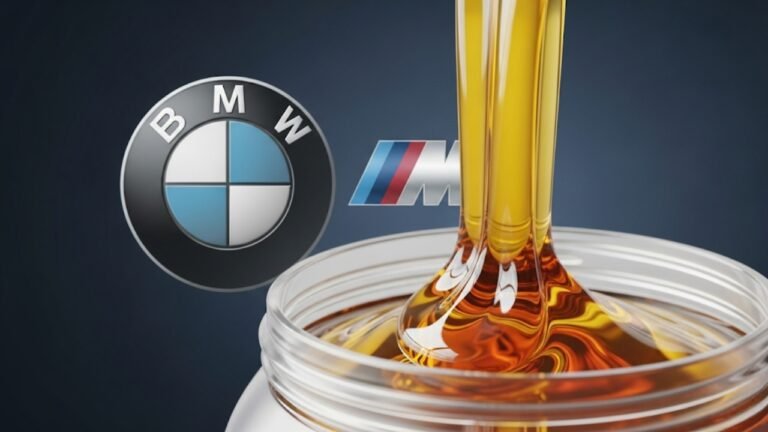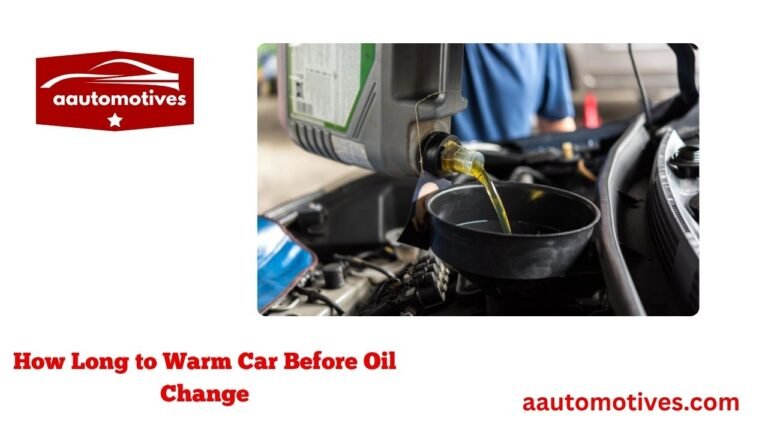Understanding Car Engine Oil Grades Like a Pro

If you’ve ever stood in front of a wall of oil bottles at an auto store, staring at labels like 5W-30, 10W-40, or 0W-20, you’re not alone. I remember the first time I tried buying oil for my old sedan—it felt like I was decoding some secret language. And let’s be honest, car engine oil grades sound more like math formulas than something related to our beloved rides. But here’s the deal—these grades are more important than they seem. They hold the key to your engine’s health, performance, and lifespan.
We often think of oil as just a slippery liquid that keeps things moving. But choosing the right car engine oil grade? That’s like choosing the right blood type for your heart. And if you mess it up, it could mean overheating, more wear, or even engine failure.
This guide will walk you through the world of car engine oil grades in plain English. No jargon. Just real talk, relatable tips, and practical knowledge. By the end, you’ll not only know what those labels mean—you’ll feel confident picking the perfect oil for your engine.
What Do Car Engine Oil Grades Really Mean?

Here’s the breakdown:
The first number (before the “W”) stands for winter. It shows how the oil flows in cold conditions. A lower number means it flows more easily in winter.
The second number (after the “W”) tells you how thick the oil is at normal engine temperature (about 100°C or 212°F).
So in 5W-30, the “5W” means it flows like a 5-weight oil in the cold, while the “30” shows it acts like a 30-weight oil when hot. Pretty cool, right?
Multigrade oils, like most oils today, are formulated to work in both hot and cold temperatures. That’s why you’ll almost always see two numbers. Back in the day, we had single-grade oils (like SAE 30), but they didn’t work well across seasons.
Understanding these numbers can feel like learning a new language. But once you get it, choosing the right car engine oil grade becomes second nature. I like to think of it like picking clothes—light and breathable for hot days, thick and warm for chilly mornings. Your engine needs the same kind of wardrobe.
How Temperature Affects Oil Grade Choice
When I moved from a warm coastal town to a place with frosty winters, my car started acting differently. It took longer to start, made odd noises, and felt sluggish. A friend told me to check the oil. That’s when I learned that car engine oil grades aren’t just about your car—they’re about your climate too.
Cold weather thickens oil. If your oil is too thick in winter, it won’t flow well when you start your car. That means your engine runs “dry” for a few seconds, increasing wear. On the other hand, if the oil is too thin in the summer heat, it won’t protect moving parts properly. It’s like using water instead of syrup to coat a pancake—just too runny to stick.
Here’s a quick cheat sheet:
| Climate | Recommended Grade |
|---|---|
| Very Cold (-20°C to -10°C) | 0W-20 or 0W-30 |
| Mild Cold (0°C to -10°C) | 5W-30 or 5W-40 |
| Moderate (10°C to 25°C) | 10W-30 or 10W-40 |
| Hot (30°C and above) | 15W-40 or 20W-50 |
A colder region calls for a lower “W” number, so your oil stays thin enough to flow on cold mornings. Warmer places need higher hot-end numbers to keep protection strong when things heat up.
Trust me—matching your car engine oil grade with your local weather can make your engine run smoother and last longer. It’s one of the simplest ways to show your engine some love.
Matching Oil Grades to Your Car’s Engine Type
Not all engines are built the same. A tiny four-cylinder in a commuter car has different needs than a roaring V8 in a muscle machine. And that means the car engine oil grade should match the engine type and age too.
Here’s a quick story: I used to drive a beat-up 2003 Toyota Corolla. It was reliable but old. Once I accidentally poured in 0W-20 because it was on sale. That oil was too thin for the high-mileage engine. The result? Ticking sounds and oil burns.
Here’s a better way to approach oil selection based on your engine:
Newer engines (modern compact cars): Typically work best with low-viscosity oils like 0W-20 or 5W-30. These engines are designed with tighter tolerances.
Older engines or high mileage (100,000+ miles): Benefit from thicker oils like 10W-40 or 20W-50. The extra thickness helps seal aging components and reduce oil burn.
Turbocharged or high-performance engines: Often require synthetic oils with grades like 5W-40 or 0W-40 for better protection at high RPMs.
Here’s a table that makes it even simpler:
| Engine Type | Suggested Oil Grade |
|---|---|
| Compact Car (new) | 0W-20 or 5W-30 |
| High Mileage Engine | 10W-40 or 20W-50 |
| Turbocharged/Performance | 0W-40 or 5W-40 |
| Diesel Engines | 15W-40 or 5W-40 |
The trick is not to guess. Always check the owner’s manual first—then adjust based on age, mileage, and how hard you drive. Think of it like choosing shoes: sure, the size is on the box, but the real fit depends on how you walk.
Mineral vs Synthetic vs Blend: Does It Affect the Grade?
Now here’s where people often get confused. You’ve probably heard terms like conventional, synthetic, and synthetic blend. These aren’t grades—but they influence how the grade performs.
Let me break it down with a quick grocery metaphor:
Mineral oil is like raw sugar—natural, cheap, unrefined. It works but isn’t as efficient.
Synthetic oil is like white sugar—clean, processed, consistent. It flows better in cold, resists breakdown in heat, and lasts longer.
Synthetic blends? Think brown sugar—part refined, part natural. A mix of affordability and performance.
You can find the same car engine oil grade in all three types. For example, 5W-30 comes in both mineral and synthetic forms. But synthetic 5W-30 will protect better, especially at extreme temperatures.
Here’s what I’ve learned through trial and error:
Use synthetic oil if you drive long distances, live in extreme climates, or own a turbocharged engine.
Go with conventional oil for older cars or budget maintenance.
Choose a blend if you want some of the benefits of synthetic without the price tag.
Remember, the car engine oil grade stays the same. What changes is the quality of how that grade performs. So don’t just read the numbers—read the label type too.
Signs You’re Using the Wrong Car Engine Oil Grade
I once switched oil grades just because a mechanic offered a “discounted blend” during an oil change. Within a week, my car was idling rough, and the check engine light popped on. Lesson learned: the wrong oil grade can cause real trouble.
Here are some red flags that you’re using the wrong car engine oil grade:
Hard starts in the morning: If your oil is too thick in cold weather, it won’t flow quickly. That slow flow can cause your engine to drag or even stall during startup.
Engine knocking or ticking: Thinner oils might not cushion engine parts well, leading to metal-on-metal contact. That’s what causes that annoying ticking.
Oil leaks: Using oil that’s too thin can lead to seepage, especially in high-mileage engines where seals are worn out.
Poor fuel economy: Too-thick oil means your engine works harder. That means more gas burned for the same drive.
Overheating: Improper oil viscosity can reduce cooling efficiency, leading to higher engine temperatures.
It’s like feeding your body the wrong diet. Sure, you might survive, but you won’t thrive. Your engine feels the same. If your car starts acting weird after an oil change, double-check that the car engine oil grade matches what your car actually needs.
How Often Should You Change Oil by Grade?
Oil doesn’t last forever, no matter the grade. But here’s where people get confused: Does the oil grade affect how often you change it?
Short answer? Yes, a little—but the oil type matters more than the grade itself.
Synthetic oils (like 5W-30 full synthetic) often last 7,500–10,000 miles.
Conventional oils (like 10W-40 mineral) typically need changing every 3,000–5,000 miles.
Synthetic blends fall somewhere in the middle: around 5,000–7,500 miles.
What about driving conditions? Well, those matter even more. If you drive in:
Stop-and-go traffic
Extreme heat or cold
Dusty or hilly environments
…you’ll need more frequent oil changes—regardless of grade.
Here’s a quick bullet list to keep in mind:
Check your oil life monitor (if your car has one)
Follow your owner’s manual recommendation
When in doubt, check your dipstick. If the oil is dark, gritty, or smells burnt—it’s time
The car engine oil grade tells you how the oil behaves, not how long it lasts. But using the right oil for your car and driving style helps ensure that it works as long as it should.
Debunking Common Myths About Car Engine Oil Grades
Let’s bust some myths. Because if I had a dollar for every time someone told me “thicker oil is better,” I could afford a new car.
Myth 1: Thicker oil protects better
Truth: Not always. While thicker oils cushion engine parts, they can also reduce flow and increase drag—especially in newer engines designed for thinner oils.
Myth 2: You can mix different oil grades
Truth: Technically, yes—but you shouldn’t. Mixing grades like 5W-30 with 10W-40 may change the viscosity unpredictably. It’s like mixing sports drinks—you don’t know what you’ll end up with.
Myth 3: You must change oil every 3,000 miles
Truth: That’s outdated. Modern synthetic oils and engines can last much longer—often up to 10,000 miles. Always go by your manual.
Myth 4: High-mileage cars must use thick oil
Truth: Not necessarily. High-mileage oils often contain additives that help reduce leaks, but thickness alone isn’t a fix-all.
Myth 5: The W in 5W-30 means “weight”
Truth: It actually means winter, indicating how the oil flows in cold conditions.
Don’t let the old garage talk fool you. Stick to your manual, trust science, and you’ll never go wrong choosing the best car engine oil grade.
Frequently Asked Questions (FAQs)
1. Can I switch from 5W-30 to 10W-30?
Yes, but only if your engine and climate support it. Both have the same hot-temp rating, but 10W-30 is thicker in the cold. If you’re in a warm climate, it’s usually fine.
2. Is 0W-20 better than 5W-30?
Not necessarily better—just different. 0W-20 is thinner and better for cold starts and fuel economy. But 5W-30 offers more protection at higher temperatures. Use what your manual recommends.
3. What’s the best oil grade for older cars?
Older engines often benefit from thicker oils like 10W-40 or 20W-50, especially if they burn oil or have leaks. Some high-mileage oils also contain special additives to reduce wear.
4. Should I use synthetic or conventional oil for any grade?
Synthetic is always better in terms of performance, longevity, and protection. It’s more expensive, but worth it—especially if you drive long distances or in extreme weather.
5. How do I know which oil grade is best for my car?
Always start with your owner’s manual. It’s the blueprint. Then, consider your climate, driving style, and engine condition. That’s how you get the perfect match.
Final Thoughts: Choosing Oil is Self-Care for Your Car
When we think about car maintenance, oil changes feel like a chore. But choosing the right car engine oil grade is one of the most powerful ways you can keep your engine healthy, efficient, and long-lasting.
It’s not just about numbers and labels. It’s about understanding your car’s personality, your driving habits, and even your local climate. You wouldn’t wear a parka to the beach, right? So why give your engine oil that doesn’t match the season?
Let’s recap the essentials:
Understand the numbers: 5W-30 isn’t gibberish. It tells you how your oil flows in hot and cold.
Match your climate: Cold winters need lower “W” numbers. Hot summers need higher viscosity.
Factor in engine age: Older engines may need thicker oils.
Don’t fall for myths: The loudest opinion isn’t always the smartest.
Read your manual: Seriously, it’s your best friend.
With the right oil grade, your engine runs smoother, lasts longer, and performs better. So next time you’re picking out oil, don’t just grab the cheapest bottle. Think of it like cooking with good ingredients—the results always taste better.






